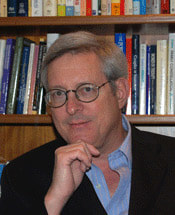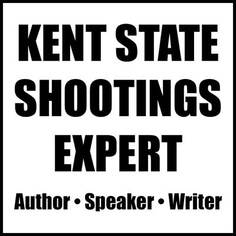|
A year and half ago, when I let Howard Means off the hook for plagiarizing my book, (http://kentstatedevelopments.blogspot.com/), I was inexplicably thinking that he had to have copied my text word to word in order to be guilty of plagiarism. I do not know why I thought that. Perhaps I did not want to believe he was capable of theft . . . or maybe I did not want to make a big issue of it. We are, after all, competitors and anyone who knows anything about the cesspool that May 4 has become would understand that he did not hurt me as much as others have.
In any event, after I was reintroduced to the Chicago Manual of Style, it appears that I was wrong about Means. The Manual's guidelines suggest he did in fact steal from my work without crediting my original reporting. Section 4.85 of the Manual, which defines what constitutes fair use and what constitutes plagiarism, states: "With all reuse of others' materials, it is important to identify the original as the source. This not only bolsters the claim of fair use but also helps avoid any accusation of plagiarism. Nothing elaborate is required: a standard footnote will suffice." Means used no such footnote in passing off my research as if it were his own. Last year, in my blog post of April 6, 2016, I noted that on page 43 of his book Means basically lifted from what I wrote about in the updated e-book edition of Four Dead in Ohio published a year earlier. In my book (Kindle location 414-450), I cited my sources in reporting that two individuals had finally admitted to being involved in the destruction of the university ROTC building on May 2, 1970. two days before the killings. Before that, no one had ever admitted being responsible for the arson (although I did report in the original hardcover edition of my book (1990) that one of the individuals involved, the late George Walter Harrington, was prominently mentioned in memos sent to and from FBI Director J. Edgar Hoover. If you will forgive my footnote fetish, I raised the question as to why Harrington was never indicted, especially since he admitted to the FBI that he played a key intermediary role in the initial attempts to burn ROTC down). Instead of revealing how he came across this information, Means cited only "an anonymous source" in identifying the second arsonist, Thomas "Aquinas" Miller. I first reported about Miller, citing a report in an unrelated book (Fortney Road) which reported Miller's subsequent involvement in a cult. Means' claim that he used "an anonymous source" does not withstand the smell test. Journalists typically grant anonymity when they have to protect whistleblowers who might be fired if their identifies were publicly revealed. Kent State, on the other hand, is strictly an historical event. In this case, both of individuals involved in the arson (Harrington and Miller) have been dead for over 30 and 40 years. There was no compelling reason for anyone to ask for anonymity, or for Means to grant it. Given that I was the first to link Harrington to Miller and write about them together a year before the Means' came out, it strains credulity to believe that Means' "anonymous source" was anything other than my book. The Chicago Manual makes it clear that an author (Means) cannot take "a free ride on the first author's labor." I also noted in my blog that Means' work as a whole was far less original than his book seemed to suggest. In the final analysis, he did not break any new ground but essentially seconded more than 20 conclusions I reached 26 years earlier. And what could be more suspicious than the fact that Means pretended my exhaustive research did not exist? Means never once cited my book in his source notes and even excluded it in his selected bibliography. That bibliography, by the way, cites every other other essential book on May 4, 1970. As I wrote last year: "it was almost as if he did not want anyone to compare his book with mine." Means also wrote as if no previous May 4 author came before him. I am sure Means will come up with some excuse, as if a 70-something-year-old author of over ten books did not know that plagiarism is the most serious journalistic sin a journalist or popular historian can commit. This issue suddenly became important again after the announcement that producer/director Jay Roach intends to turn Means book, 67 Shots, into a motion picture using the same title as Means. The proposed movie is being packaged by Roach's production company. Other producers include Tina Fey and her composer husband, Jeff Richmond, a graduate of Kent State.
0 Comments
The question of who burned the Army ROTC building at Kent State two nights before the May 4, 1970, killings has always been one of the Kent Affair’s unsolved mysteries. That act of arson, as I wrote in my book, Four Dead in Ohio, was “the one act of violence that resulted in the calling-out of the National Guard. If there had not been a fire, the Guardsmen would not have come onto the campus and the students might not have been killed on May 4.”
Until now only one person, a high school student named George Walter Harrington, who was visiting his brother Jim that night, has been positively linked to the fire. We now know the identity of two other men. One of them outed himself in an online video supporting a Kickstarter campaign to complete an authorized documentary of Devo, the New Wave group that formed after several of its members witnessed the May 4, 1970 shootings. "Jerry Casale, the son of a Kent State English professor, and Bob Mothersbaugh of Akron were two of Devo's founding members." In the preview tape, Mothersbaugh actually admitted on tape: “I helped burn the ROTC building down.” The confession can be heard at www.kickstarter.com/projects/1409838010/authorized-devo-documentary-film/posts/278030. Mothersbaugh has never been mentioned before in any previous account of the tragedy. He did not elaborate on his role, or about the roles of others who tried alongside of him. Mothersbaugh is not the only name that has recently surfaced. A not-yet-published book, “Fortney Road,” by Jeff C. Stevenson, about a Christian cult, devotes an entire chapter to the late Thomas "Aquinas" Miller, a drug addict who was not a student at Kent at the time, but who was nevertheless one of the most visible protestors that weekend. Miller was prominently featured in a Life Magazine photo as the protestor who lost it after the shootings and dipped a black flag in the blood of the slain Jeffrey Miller and sprayed it on other students. Chapter 13 of the manuscript, which quotes what Tom told his younger brother John, reports that on May 4 Tom admitted he, along with two of his companions provoked the soldiers and that Tom Miller even screamed “at the top of my lungs: “Shoot me! I’m a helpless woman. I’m a child! Shoot me! I was referring to the My Lai massacre.” The brother, John Miller, also quotes Tom as saying “he was among the group that set the ROTC building on fire.” The manuscript does not come out and say who accompanied Tom on the night of May 2, 1970, but it makes clear that on May 4 Miller was joined at the hip with two of his closest friends and fellow members of the “Kent Krazies,” Alan Canfora and Tom Grace. Canfora and Grace were also friends of Jim Harrington. Both Canfora and Grace were wounded by the National Guard. Miller, who later converted to the Christian cult, felt he was the one who deserved to die. The revelation raises renewed questions about whether Canfora and/or Grace also were involved in the arson. Canfora, in particular, appears to be still covering up other crimes and testified falsely about his role that weekend. At the 1975 wrongful death and injury trial, Canfora testified falsely under oath that he was not even present at the building that night. However, he has since admitted he was, and in a 1979 interview for the Burr, the school yearbook, Canfora proudly told reporter Eric Kosnac that he was "in the thick of things” that weekend and was surprised he was only indicted for second degree rioting. |
AuthorThis blog is written by William A. Gordon, a Kent State alumnus and the author of "Four Dead in Ohio" and three other books. It offers commentary on the still unfolding developments in the Kent State shooting case. Archives
March 2020
Categories
All
|
|
Kent State Shooting Expert
William A. Gordon Email: [email protected] Website: www.KentStateShootingsExpert.com |

 RSS Feed
RSS Feed
